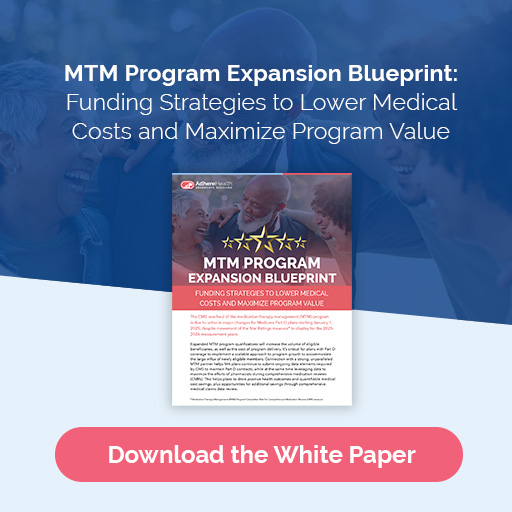Published on .
When it comes to solving medication adherence challenges, the stakes are high—and so are the expectations. Health plans are under mounting pressure to make adherence improvements, and this is made more complex by shifting member barriers, regulatory demands and the ever-increasing need to deliver an exceptional member experience. But it’s critical to get it right: poor adherence not only drives avoidable healthcare costs but also drags down Star Ratings and other performance metrics.
Many organizations find that relying on in-house programs or PBM solutions—or on a single vendor for adherence and services such as MTM—can limit their ability to deliver measurable improvements. Without the right solution, member engagement falls short because one-size-fits-all outreach often misses the mark, causing performance to stall.
What is a multi-pronged approach and why does it matter?
Leading plans are embracing a multi-pronged adherence approach—a smarter, more flexible model that allows them to plug in best-in-class partners across behavioral science, clinical expertise and operational execution. By collaborating with more than one approach to execute complementary components of an adherence, MTM or cost reduction program, you can create a connected ecosystem where vendors work in parallel—or even in partnership—to reach shared goals.
Different member cohorts will respond to different levels of engagement. Plans can use less resource-intensive strategies for lower- and average-risk members, while employing higher-touch solutions like AdhereHealth for a cohort of unengaged members that are negatively impacting overall adherence performance
This model is especially valuable for plans and PBMs that already have contracts in place but want to improve performance without ripping and replacing entire programs. With the right integration and oversight, a multi-pronged approach can strengthen what’s already working while filling critical gaps that limit member impact.
Top five reasons to consider a multi-pronged adherence strategy
At AdhereHealth, we’ve worked with health plans of all sizes and have seen firsthand how a multi-pronged strategy—when done right—can deliver stronger outcomes, more flexibility and measurable results. Here are the top five reasons your plan should consider this approach:
1. One size doesn’t fit all: tailor outreach to diverse member needs

2. More touchpoints = more opportunities to close gaps
Adherence isn’t a one-time intervention—it’s a journey that requires reinforcement. By working multiple channels, you extend the number and type of member interactions. One partner may drive initial engagement through SMS text outreach, while another follows up with live clinical conversations to overcome resistance or confusion. This layering ensures no opportunity to drive action is missed.
3. Maximize strengths, minimize blind spots
Every vendor brings unique value. One might shine in member education while another specializes in closing Part D gaps or driving pharmacy coordination. A multi-pronged model lets you combine these strengths and reduce the risk of over-reliance on any single area of expertise: making your overall strategy more comprehensive and resilient.
4. Built-in redundancy that drives accountability
When you work with just one adherence angle, it’s harder to benchmark performance or pivot quickly. With multiple partners in play, you gain natural points of comparison. This fosters transparency, encourages continuous improvement and allows for agile decision-making. If something isn’t working, you’ll know faster and have alternatives at hand.
5. Better (and faster) outcomes
We’ve seen health plans make measurable gains by layering complementary capabilities. For example, pairing AdhereHealth’s high-touch, tech-enabled engagement for unengaged members with in-house efforts to support lower-risk members enables efficiency of resources and budget maximization. That means faster gap closure, fewer missed fills and more adherent members—without added administrative burden on your team.
Final thought
Improving adherence isn’t just about more outreach—it’s about smarter, more connected outreach. A multi-pronged adherence strategy gives you the flexibility to build an ecosystem that works for your plan, your existing partners and—most importantly—your members.
Ready to strengthen your adherence approach?
Let’s talk about how AdhereHealth can plug into your ecosystem or help you build one that drives better performance. We bring deep clinical, behavioral and operational expertise to every partnership, so you get measurable value from day one.

Sara Baughn,
SVP, Business Development, AdhereHealth

